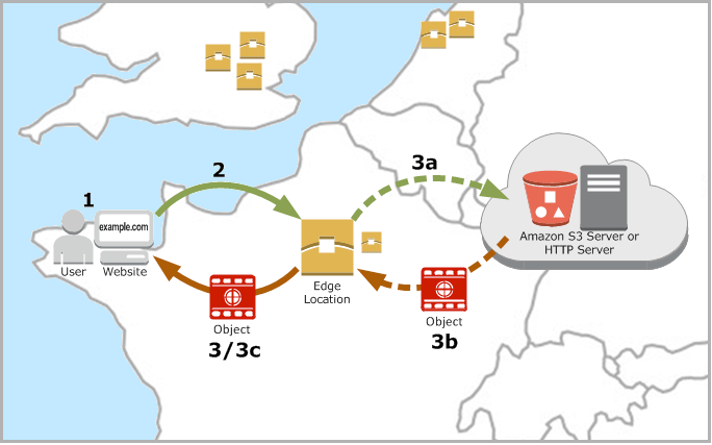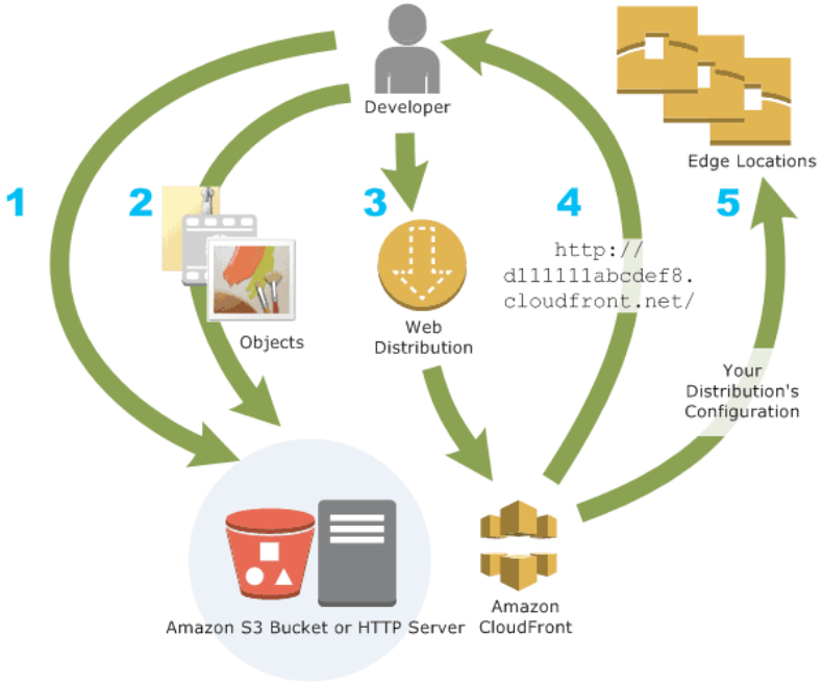AWS Startups Blog
To Deliver Rich Content, Startups Need the Right Infrastructure
by Vinay Arora, AWS Startup Solutions Architect
Startups face enormous challenges when it comes to delivering content to consumers. Costs are a constant worry with the challenging task of getting to market before funding runs out, and reaching target audiences online with the right content at the right time is a major undertaking. In order to compete in today’s visual-first world, startups must deliver rich content — music, videos, and graphics — quickly and flawlessly across all touch points, providing seamless and compelling user experiences.
There are other potential pitfalls, too. To generate real value, startups must be lean and agile, prioritizing high-value functions and testing them with users throughout the development process. Early prototyping can allow startups to detect and correct faults, but identifying problems is pointless if companies can’t act quickly to address them. To stay nimble, startups need an infrastructure and services that will allow them to run their workloads rapidly.
Getting the right infrastructure and services in place is particularly important as startups grow. In a startup’s early stages, when speed is a priority, security can often be something of an afterthought — a fatal oversight. Startups, particularly in the financial and healthcare sectors, must show that they can safeguard their data and that of their customers. To protect themselves and maintain the trust of their users, startups must be able to detect fraudulent traffic, enable privacy requirements, fend off Distributed Denial of Service, assaults, and handle the phasing out of third-party cookies. Put simply: Implementing security best practices can mean the difference between success and failure.
Finally, working at a global scale only adds additional complications. Startups that want to build a global website or offer content to people around the world quickly and efficiently need the right kind of infrastructure to support their goals. Luckily, AWS can help you address all of these challenges.
How a Content Delivery Network can help you work at scale
A Content Delivery Network (CDN) distributes content from an “origin” server — which could be an Amazon Simple Storage Service (Amazon S3) bucket, HTTP server, or Amazon Elastic Compute Cloud (Amazon EC2) instance — to a vast network of cache servers spread throughout the world, and automatically sends end-users to the closest cache server location for viewing content. This results in lower latency for your app and a better user experience. The content can be static, like an HTML page, or dynamic, like an API backend. By utilizing a CDN, you can increase the scalability and performance of your applications.
Amazon CloudFront, Amazon’s global content delivery network, offers the largest infrastructure footprint of any cloud provider — one that’s expanding continuously to help customers deliver better user experiences. It’s been optimized for performance and scalability, security protections are integrated and customizable, and real-time reporting allows you to monitor your application’s performance. Customers have complete control over the service and can make changes on the fly.
Here’s how CloudFront can help you deliver rich content and better experiences to users:

Thanks to CloudFront, data is delivered globally with the highest possible performance. Distributed caches known as CloudFront Regional Edge Caches operate as a caching layer between the edge location and the origin. Previously, when there were no Regional Edge Caches, CDN edge locations were forced to return to the origin when they lacked content. With Regional Edge Caches, however, the edge locations are sent to the origin only if the Regional Edge Caches lack material. This helps minimize demand on the origin, enables scaling of the CDN without scaling the origin, and doesn’t add to your cost. Regional Edge Caches also have larger caches than edge locations, which means objects will remain in them for a longer period of time.
To configure CloudFront, you need to build a CloudFront distribution, which tells CloudFront where to source content. First, you choose the origin servers for your items (S3 buckets or HTTP servers) and upload files, which may include web pages, photos, and media assets. Then, you construct distributions to inform CloudFront which origin servers to use to obtain the files. Additionally, you can decide whether to log all requests and enable the distribution as it is created. CloudFront assigns your distribution a domain name, which you can view in the console, and it will also send the distribution’s configuration to all of its edge locations.
In addition to optimizing performance, CloudFront also helps startups address a number of other challenges.
Free data transfers between AWS cloud services and Amazon CloudFront for origin fetches help your startup stay lean. If AWS origins such as Amazon S3, Amazon EC2, or Elastic Load Balancing are used, there is no charge for data transferred from the origin to CloudFront edge locations (this type of data transfer is known as an origin fetch). And for some origins, like S3, CloudFront can help lower overall data transfer egress costs, which can help extend your startup’s runway.
Moreover, there are pricing options for every level of usage. Pay-as-you-go pricing is simple, straightforward, and flexible, with no upfront fees. If you anticipate a certain monthly spend, the CloudFront Security Savings Bundle could help you save up to 30% on your bill. And for customers who make certain minimum traffic commitments (typically 10 TB/month or higher), we offer custom pricing.
Security is also built into the CloudFront infrastructure, giving startups robust privacy and encryption capabilities. All CloudFront users get the automated safeguards of AWS Shield Standard. CloudFront can also work in tandem with the AWS Web Application Firewall and AWS Shield Advanced to help protect your apps from a variety of sophisticated threats, including DDoS attacks. SSL/TLS is used to deliver secure APIs and websites, where SSL settings are enabled automatically by default. You can easily create custom SSL certificates with AWS Certificate Manager (ACM) and associate them with your CloudFront distributions at no additional cost. ACM also automates certificate renewal, removing the overhead and costs associated with manual renewal. At AWS, security is our top priority, and these features make it easy to implement best practices and keep your data safe.

The best way to deliver rich content and better experiences to users
Slow-loading apps and websites are no longer forgiven in the modern-day startup landscape. Thankfully, Amazon CloudFront provides a content delivery network that allows you to stay agile while delivering new products and updates. It’s designed to provide lower latency and faster data transfer (as compared to serving all traffic directly from the origin server). Developers can take advantage of a full-featured API to create, configure, and maintain CloudFront distributions, and they also have access to tools such as AWS CloudFormation and AWS SDKs to configure and deploy their workloads. Real-time logs, containing detailed information about viewer requests, make it easy for you to monitor the performance of your content delivery and respond quickly to operational events.
Moreover, CloudFront is built on top of the growing AWS infrastructure, enabling connections with all major access networks for optimal performance. CloudFront edge locations are connected to the AWS regions through the AWS network backbone – fully redundant, multiple 100GbE parallel fiber that circles the globe and links with tens of thousands of networks for improved origin fetches and dynamic content acceleration. All told, CloudFront uses more than 275 points of presence in more than 90 cities across 47 countries.

It’s a truly global network that will allow your startup to reach people all over the world, providing rich content quickly and seamlessly.
Learn more about securely delivering content with low latency and high transfer speeds with CloudFront.